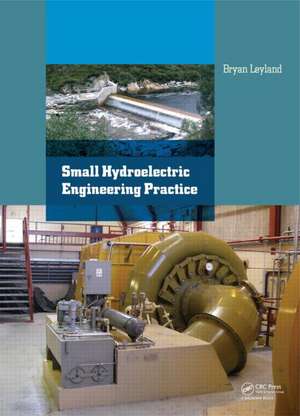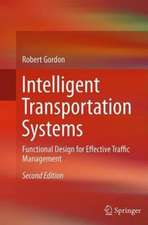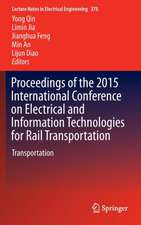Small Hydroelectric Engineering Practice
Autor Bryan Leylanden Limba Engleză Hardback – 11 feb 2014
As small hydroelectric schemes are usually built against a limited budget it is extremely important that the concept design is optimum and every component is designed to maximise the benefit and minimise the cost. As operating costs are often a high proportion of the income it is very important to make sure that everything is designed to be simple, reliable and long lasting.
The book is based on the experience gained over 45 years on the overall and detailed design, construction and commissioning of more than 30 small hydropower schemes. It includes contributions from experts in the field of intakes, water diversion structures, geology, canals, painting and other aspects of hydropower development. It is intensely practical with many drawings and photographs of schemes designed and commissioned by Leyland Consultants and others. There are also sections on preparing specifications, tender assessment and operation and maintenance.
The book includes a CD with spreadsheet programs for analysing aspects of small hydropower development and many arrangement drawings and detail designs for gates, penstocks, electrical systems and control systems. Typical specifications for generating plant are also included. The spreadsheets will be useful during the feasibility stage and the drawings will enable designers to scale the designs as needed for their own projects.
Consultants, developers, designers, builders and operators of small hydroelectric schemes will find this book invaluable.
Preț: 1332.24 lei
Preț vechi: 1624.69 lei
-18% Nou
254.95€ • 276.84$ • 214.16£
Carte tipărită la comandă
Livrare economică 22 aprilie-06 mai
Specificații
ISBN-10: 1138000981
Pagini: 254
Ilustrații: 90 black & white illustrations, 6 black & white tables
Dimensiuni: 174 x 246 x 23 mm
Greutate: 0.6 kg
Ediția:1
Editura: CRC Press
Colecția CRC Press
Public țintă
ProfessionalCuprins
Recenzii
(...) Now that the consultant is entering into the tender drawings phase, We are trying to raise many of the design considerations highlighted in this book to them. As we debate each item, I cannot help but feel extremely relieved to have bought and read this book. At the very least, even though we are led by our consultant on the designs, we are not completely blind and have working knowledge to influence the designs.
This book has been invaluable to our business. The contents in the book are having a real life impact here in our projects.
I highly recommend this book to anyone who is about to enter into the small hydro space.
Alan Jenviphakul
The book takes you from start to finish through the evolution of a hydro scheme. From initial site assessment, hydrology, environmental, banking and finance through the many layers of detailed design work to detailed analysis of the many types and configurations of turbine plant and generators available.
Small Hydroelectric Engineering Practice is a thoroughly readable and enjoyable book for anyone interested in small hydro. It is an essential book for anyone working with small hydro whether a first time developer or an experienced hydro engineer.
Dave MacKay, Inchbonnie Hydro, New Zealand
A book, based on tradition, full of experience and presenting recent developments. Supported by many pictures, sketches and tables it is very comfortable to read and to learn in one run. Several pages dedicated to "learning from failures" and operational recommendations should be highlighted. A "must" in the library of a hydropower engineer!
Prof. Dr Bernhard Pelikan, University of Natural Resources and Applied Life Sciences, Vienna, Austria;
Vice President of the European Small Hydropower Association
This is a unique and comprehensive collection of practical engineering advice that should be essential reading for anyone involved in the development of a small to medium sized hydro-electricity resource. It covers all engineering disciplines and is based on a lifetime of involvement in this industry by the author. He should be commended for sharing both ingenious design solutions and the sometimes painful lessons learned, with others who might be fortunate enough to also be involved in harnessing these often overlooked renewable energy resources.
Ir. W.L. Mandeno, FIPENZ, CPEng, Int.PE.
Wellington, NZ
By systematically explaining the different scheme components, Mr Leyland’s book caters to a range of readers and keeps the book highly readable. He explained logically about the important decisions required when developing a scheme and suggests how to avoid repeating past mistakes. This lays the foundation for the subsequent detailed discussions including job specifications, contracts for procurement and installation.
The book also includes a CD of eight spreadsheets to assist consultants, engineers, owners and development of small hydro electricity schemes. It reads well using clear, conversational language to explain a complex subject without a lot of jargon. As a fellow hydropower enthusiast, I believe this book is an excellent reference.
Robert Shelton, MIPENZ
Notă biografică
Bryan Leyland trained in New Zealand and then went overseas for nine years. During this time he worked on power projects all over the world. He returned to New Zealand in 1970 to work for Lloyd Mandeno, an outstanding hydropower engineer. In 1974 Bryan set up his own consulting firm and spent most of the next 25 years working on the overall and detailed design and commissioning of 26 small hydropower schemes totaling 250 MW and the refurbishment of 27 schemes in New Zealand and overseas. Ten of the scheme won awards as "engineering projects of outstanding technical significance". On three occasions he was involved in the repair and recommissioning of schemes that had suffered catastrophic failures. This gave him a valuable insight into the need for high quality geotechnical and civil engineering. He has also acted as a consultant to the World Bank and to the Asian Development Bank on hydropower investigations and on dam safety. He has written many papers on hydropower development, power systems and electricity markets. In 2009 he was listed by Waterpower and Dam Construction as one the 60 most influential people in the hydropower industry worldwide.
Descriere
Small Hydroelectric Engineering Practice is a comprehensive reference book covering all aspects of identifying, building, and operating hydroelectric schemes between 500 kW and 50 MW. In this range of outputs there are many options for all aspects of the scheme and it is very important that the best options are chosen.
As small hydroelectric schemes are usually built against a limited budget it is extremely important that the concept design is optimum and every component is designed to maximise the benefit and minimise the cost. As operating costs are often a high proportion of the income it is very important to make sure that everything is designed to be simple, reliable and long lasting.
The book is based on the experience gained over 45 years on the overall and detailed design, construction and commissioning of more than 30 small hydropower schemes. It includes contributions from experts in the field of intakes, water diversion structures, geology, canals, painting and other aspects of hydropower development. It is intensely practical with many drawings and photographs of schemes designed and commissioned by Leyland Consultants and others. There are also sections on preparing specifications, tender assessment and operation and maintenance.
The book includes a CD with spreadsheet programs for analysing aspects of small hydropower development and many arrangement drawings and detail designs for gates, penstocks, electrical systems and control systems. Typical specifications for generating plant are also included. The spreadsheets will be useful during the feasibility stage and the drawings will enable designers to scale the designs as needed for their own projects.
Consultants, developers, designers, builders and operators of small hydroelectric schemes will find this book invaluable.

























